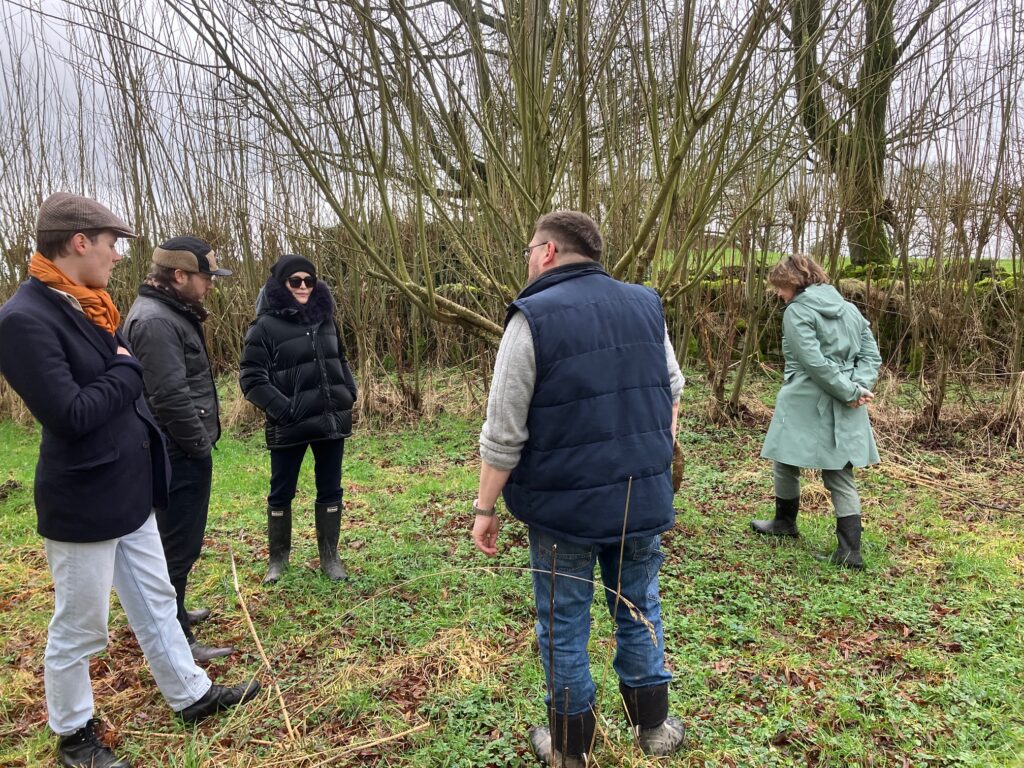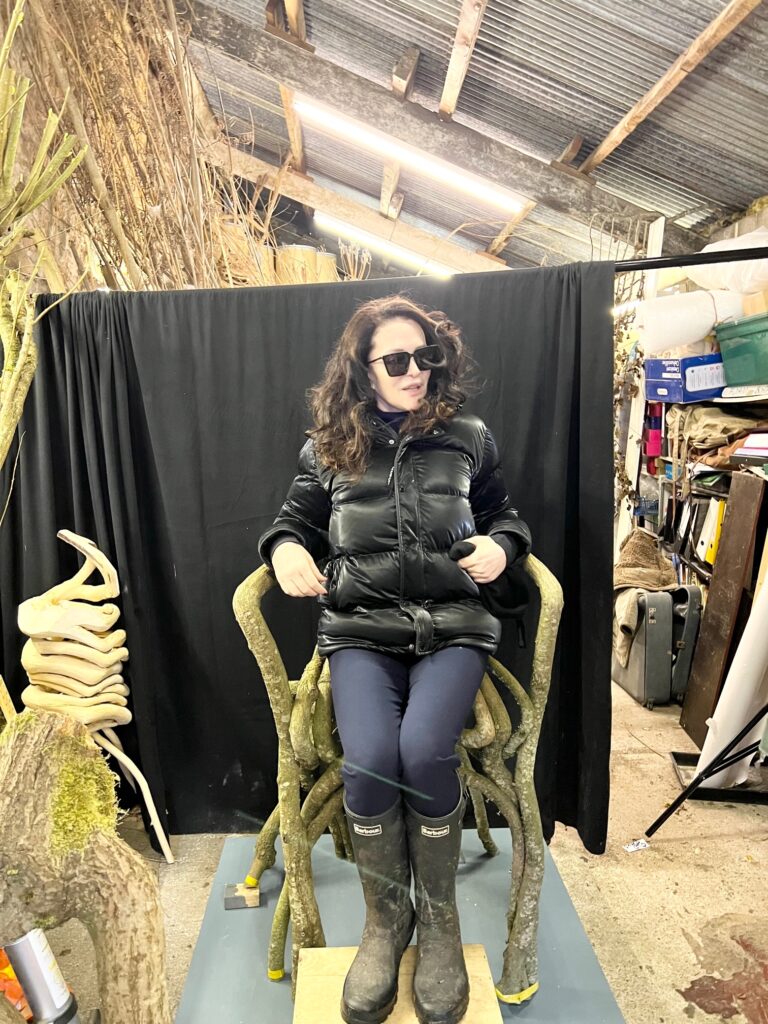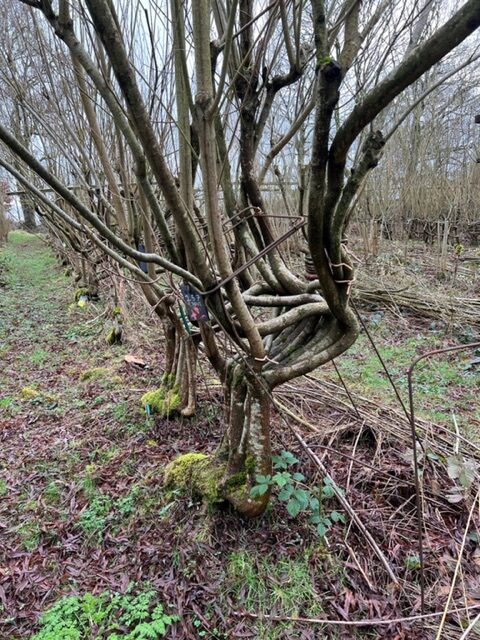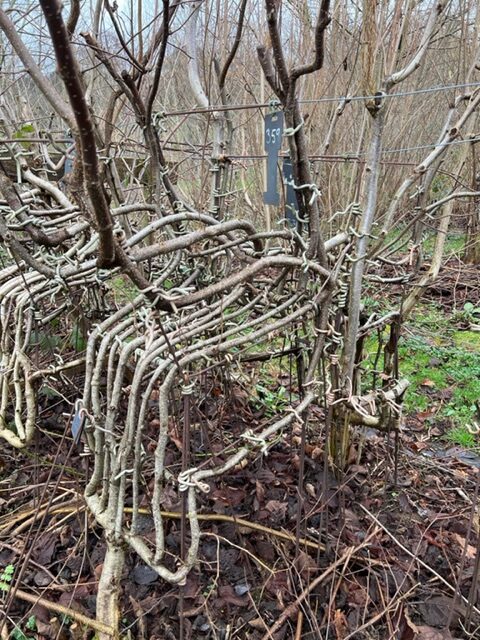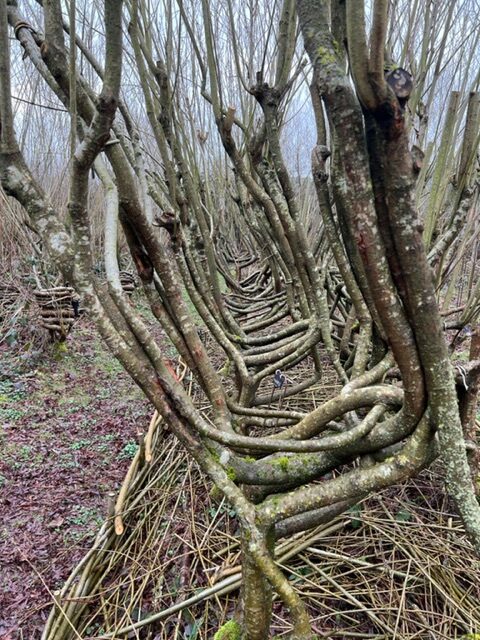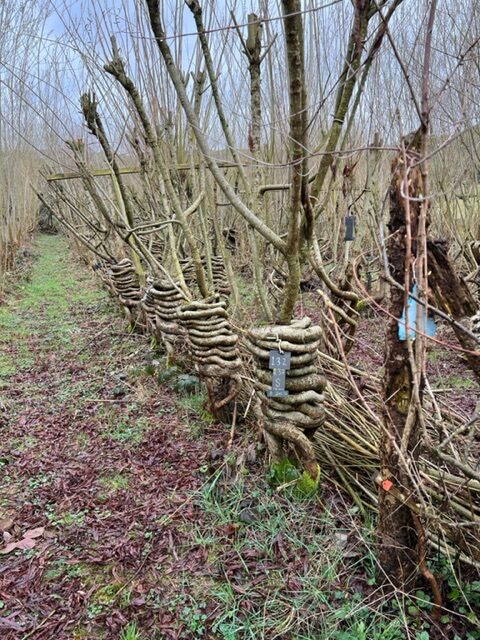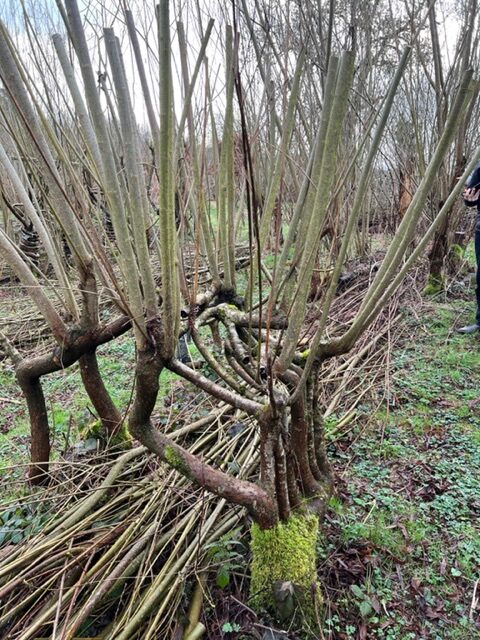
There is a place, where chairs are grown in an orchard. And it is not in a science fiction movie. According to Gavin Munro’s utopian vision, in the next century the gardens of our cities and communities will be filled with trees grown in the forms of chairs, tables, and benches, enabling the members of those communities to be able to harvest furniture for their homes from the green parks. In present day, Munro and his life partner Alice Munro are busy working hard to create a prototype for this radical ideal at their orchard in the English countryside—just 4 hours north of London. They investigate and study while growing furniture on apple, ash, hazel, and willow trees in search of the ultimate formula that will change the world of furniture making. Their project has generated tremendous interest in the design community. Recently they received the 2024 Créateurs Design Awards, and their chairs have been included in the A-list of contemporary design collections, desired by curators and collected in museums. They call their venture Full Grown in celebration of the idea that furniture should be grown in solid pieces rather than the traditional way of using separate bits of wood.
Munro started his experimentation in 2006, which turned out to be just the right moment. These were the early years of the new millennium, and practitioners of design were seeking out fresh, scientific, and unexpected ways of allowing objects to grow. Their innovations were celebrated and illuminated in Paola Antonelli’s seminal exhibition of 2008, Design and the Elastic Mind, where MoMA’s Senior Curator of Architecture and Design revealed new and progressive forms of production, utilizing scientific advances as well as both low and high tech. She presented computerized paint spray, the way robots mimic human creations, objects by colony of bees , and early experimentations with new generations of 3D printers.
Munro’s project was not included at that exhibition, as it is still slow to develop. It takes approximately 8 years for every piece of furniture to be formed before it is ready to be harvested. But now, nearly 20 years later with hundreds of furniture pieces grown in the orchard, there is a lot of data collected and new knowledge gained. Yet, out of dozens of trees, only a handful are grown into successful products.
“Each tree,” Munro told me, is like a person who “deserved kindness and competency.” Those values have become fundamental in his life experience as someone born with Klippel-Feil—a spine syndrome—and spent the first 14 years of his life in hospitals, undergoing many operations. After graduating from art at Leeds University and spending a couple of years as a barn builder in California, it was clear to him that working with nature is what he wanted. Giving trees the same kindness and competency that he received as a patient was his new mission.
The turning point came in 2015, when Munro met British sculptor David Nashi, known for working with wood, trees, and natural environments. When Nash classified Munro’s project as art, it was the ultimate revelation. From that moment, he was able to perceive his orchard chairs not merely as functional objects, but rather as art sculptures and the trees as influencing the outcomes. The trees are not bent, but rather determining the shapes they will eventually become.
He has remained committed to growing his furniture in a sustainable way with respect to the environment; once a piece is harvested, the tree is not killed, but rather it regenerates and continues producing furniture while continuing to sustain birds and wildlife. The role of the designer is to bring his own intervention into the natural growth of the tree, like the horticultural technique of grafting, which is meant to produce the best the species has to offer rather than allow the tree to grow in a generic, lesser quality.
Munro began his experimentation at his mother’s garden and very quickly realized that in order to achieve the forms he was seeking, he must grow the chairs upside-down. By pruning, coppicing, and grafting, he is able to control the direction of the growth into the forms he chooses by making changes to the natural direction of the tree, calling it ‘Zen 3D printing.’
Visiting Alice and Gavin Munro’s orchard was an exquisite experience, especially for me as I grew up on a fruit farm. Everything is organized and the trees are arranged in meticulous rows. When you come close to the trees, you can identify the forms of chairs, benches, lamps, all formed of the trees themselves. Once a piece of furniture is ready to be harvested, it is taken to the workshop where it is shaped, trimmed, and made ready to send to the London gallery of his dealer Sarah Myerscough. The daily work is a reminder of the techniques that were used to correct Munro’s spine that he uses to grow these chairs that star in art fairs across the globe—sought by those who want to live with good design. Poetic, progressive, and so original.
